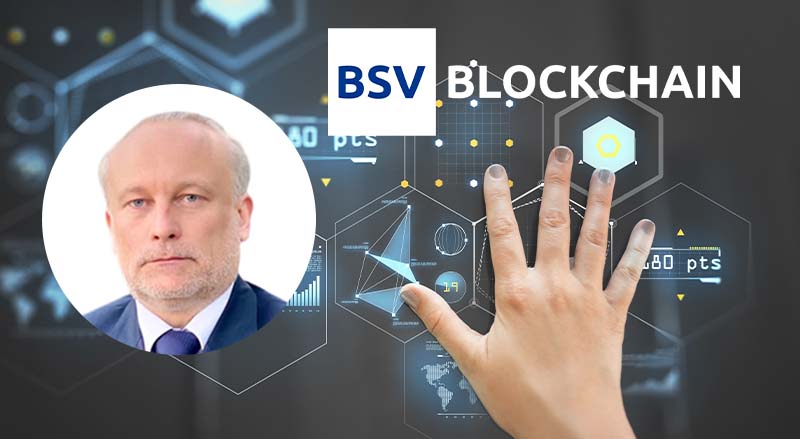Dereck Hoogenkamp, Chairman at PalmFusion and Yalla Limited, is an experienced entrepreneur and technology investor with a rich background in the real estate industry and experience in growing tech ventures around the world. One of his latest initiatives is PalmFusion – a company that manufactures biometric authentication devices that offer contactless verification using a scan of a user’s hand.
PalmFusion can be used for authentication across a range of situations, from identity verification and access control to buildings to securing blockchain wallets. When it comes to blockchain technology Hoogenkamp is a big fan of the BSV data network protocol, understanding that it can deliver next-generation metaverse applications thanks to its unbounded scaling, low transaction fees, high data throughput and support for microtransactions.
He believes that blockchain technology can easily be integrated with PalmFusion’s biometric security solution, and that their unique authentication method can enhance the security of BSV wallets and applications.
We spoke to Dereck Hoogenkamp about his impression of BSV, his vision for the future and how PalmFusion could be integrated with the BSV blockchain.
The unique features of PalmFusion
PalmFusion is unique among biometric security systems, as not only can it verify the user’s identity, but it can also verify proof-of-life without physical contact. The system simply requires a user to hover their hand over the sensor, whereupon their hand’s geometrics and vascular structure are scanned to verify their identity.
‘PalmFusion is, as I said as a kid, super cool. It reads the palm of your hand – it scans the veins inside your hand, the print of your palm and the geometrics of your hand,’ Hoogenkamp says.
‘This is fully IP’d and fully patented. Then on top of that, [the system provides] access control, electronic ID and even a payment system.’
These three facets of the PalmFusion solution are labelled PalmAccess, PalmID and PalmPay, respectively.
‘Your palm is a replacement for your key, your wallet, your passport, your driver’s licence, everything – and it’s fully non-intrusive. It’s one of the only inside and outside solutions in the world of biometrics,’ he adds.
‘PalmFusion is fully COVID-compliant because you don’t have contact with anything – because you scan from the air, you don’t have to touch anything. And on top of that, it’s also GDPR compliant and PSD2 compliant. Besides being contactless, it also verifies life.’
PalmFusion and the BSV blockchain
Hoogenkamp is excited about the potential of the BSV blockchain and how it can be integrated with solutions like PalmFusion. He notes that integrating a blockchain like BSV into the three aspects of the product – PalmAccess, PalmID and PalmPay – would be easy and efficient.
‘The blockchain, of course, can be implemented with PalmFusion technology – it can be implemented at all levels. Because, if you are talking about electronic ID, there are so many clients on the BSV blockchain who are using that already. It is the same for the payment system and access control,’ Hoogenkamp says.
‘Using the BSV blockchain or any other blockchain, it is possible to implement this. But the good thing about the BSV blockchain is that it is less costly than if you compare it, for example, to Ethereum. The other advantage, of course, is that is fast.’
Integrating the BSV blockchain with PalmFusion would allow the solution to not only enable access controls for vehicles, buildings and lockers, but also for users’ blockchain wallets – securing their digital assets with a scan of their hand.
‘It’s really interesting, I think. Even for a safe, a sports locker, keys… even for your cryptocurrency wallet. I mean, forget about seed phrases, just use your hand. I don’t even have to remember my passwords anymore,’ he says.
Outside potential applications of PalmFusion in the BSV ecosystem, Hoogenkamp has a keen interest in the concept of the metaverse, and how the BSV blockchain’s native smart contract capabilities can enable new business cases and digital interactivity. The concept of ‘digital twins’ – the creation of digital, tokenised objects that exist on the blockchain and mirror their real-world counterparts – is particularly exciting to him, as this could enable myriad new applications across many industries.
‘Everybody talks about the metaverse and talks about gaming – that is not really the exciting part for me. What is super exciting is to have the metaverse and the real world combined.’
‘It is an exact digital copy, an exact twin. So, if you change something in the metaverse, it changes in the real world. If you change something in the real world, it changes in the metaverse.’
He describes how this could be applied to provide physical services to customers interacting in the metaverse, as by ensuring parity between the physical world and the metaverse, you can allow users to affect physical change through digital, blockchain-recorded interactions.
Hoogenkamp views this shift towards digital inhabitancy as inevitable, and while it may be difficult to acclimatise to and its ramifications may be concerning, the same has been true for every major technological leap in history.
‘The metaverse is scary, but the Internet was scary in the beginning, too,’ he says.
